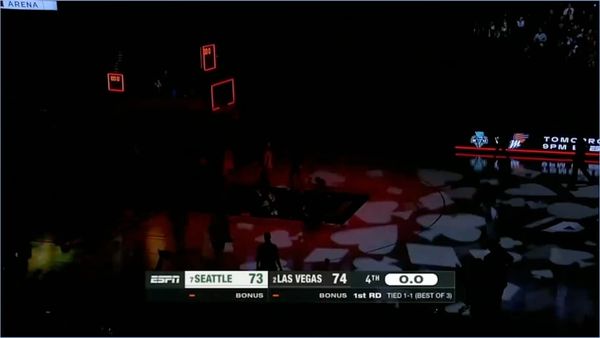Mark Hebner still fumes when he thinks about the extra $30 million he should have today. And he squarely blames one phenomenon for his loss: active investing and lousy mutual funds that lagged the S&P 500.
Hebner, decades ago while in his 30s, sold a medical firm "and had a very large windfall for my age." Not knowing anything about investing, he trusted a broker to pick the best stocks and actively managed mutual funds. Rapid-fire buying and selling filled up the transactions section of Hebner's monthly statement.
But once Hebner took the time to compare his returns with simply buying and holding index funds, his jaw dropped. All that trading, and he lagged the S&P 500 by a wide margin. So much for active vs. passive funds.
"I was angry, then I moved to index funds and finally I realized I wasn't alone," said Hebner, who later founded Index Fund Advisors, a firm that helps clients build portfolios 100% out of passive index funds.
Shift To Passive Investing And S&P 500 Index
Hebner is just one dramatic example behind a tectonic shift in the way investors are investing. They're fed up with actively managed mutual funds' money managers, who try to "beat the market" only to fail — if not immediately, predictably over time.
And as a result, investors are yanking money out of the hands of stock-picking pros and pouring it into low-cost index funds at a historic pace. They're moving as fast as they can given the risk of triggering capital gains on old holdings, inertia and the hassle factor of moving money.
The active vs. passive funds tug-of-war hit a major tipping point this year. "Index funds have officially won," said Morningstar Vice President of Research John Rekenthaler. Over the five years through March 2024, investors poured nearly $3 trillion into index funds but yanked about $1.4 trillion from active ones, says Ryan Jackson, a research analyst at Morningstar.
"Assets in passively managed funds surpassed those in actively managed funds for the first time ever in January 2024, marking a milestone in the decades-long rise of index investing," said Jack Ablin, strategist at Cresset Capital Management.
Active Vs. Passive Funds: Where Money Is Pouring
Active vs. passive is one of the oldest debates in investing. But the argument is all but settled.
Active funds employ human stock pickers who try to select the top stocks. They also usually charge 0.66% or higher as a fee for their expertise, says the Investment Company Institute. On the other hand, passive funds simply buy all the stocks in an index. They're not trying to pick the best, but simply own everything. They charge much lower fees, usually 0.05%, as there's no research or due diligence required.
"Think about the hurdle that poses for active funds when this fee disparity compounds over time. Fees are annual," said Jackson. "This isn't just a race they start behind index funds. They have to move further back at the start of each lap."
Active Funds Feel The Pain
Active fund companies, too, are feeling the pain as investors bail out. Money is pouring out of American Funds, T. Rowe Price and Franklin Templeton, known for their actively managed mutual funds, says Morningstar Direct.
American Funds saw $75.3 billion in outflows in the past year and nearly $25 billion this year. And shares of Franklin Templeton themselves are the sixth-biggest wealth destroyers in the past decade, Morningstar says.
Shares of leading index investment firm BlackRock are up nearly 150% in 10 years. Shares of T. Rowe Price are up just 50%, and Franklin Templeton's are down 51% in that time.
Actively Managed Mutual Funds Losing To The S&P 500
Study after study, though, shows why investors in active mutual funds are fed up. Active funds are generally lousy. In the past five years, 79% of large-cap funds lagged the S&P 500, says the S&P Dow Jones Indices SPIVA Scorecard. And their longer-term track record is even uglier. Nearly 88% of large-cap funds trailed the S&P 500 in the past 15 years.
And it's pretty much the same story across asset classes. Nearly 90% of all midcap and small-cap funds lagged their benchmarks.
What about the argument that portfolio managers are skilled at finding undervalued gems? Not true. In fact, their track record there is even worse. Nearly 94% of large-cap value funds lagged the benchmark.
If active fund managers shine anywhere, it's with bonds. But even there, the indexes still win. Nearly 60% of active bond funds lag the benchmark.
Morningstar found that from 2014 to 2023, just one in every four active funds beat its average indexed peer. And index funds dominated active funds in the largest categories. The U.S. large-blend category represents about 27% of the U.S. mutual fund and ETF market.
"When you consider that just 12% of active large-blend strategies beat their average index peer over the past decade, it's easy to see how index funds could seize so much market share in such little time," Morningstar's Jackson said.
Picking The S&P 500 Winners?
You might agree that most active funds are lousy. But still, 12% of large-cap funds topped their benchmark in the past 15 years. Why not just buy those?
You can't buy them because there's no way to know ahead of time which funds they will be. Very few top active funds of one year repeat to lead again.
Data again bears out how top funds in one year, five years or even longer fail to repeat their outperformance. More than a third of the top 50% large-cap funds from 2012 through 2017 failed to be in the top 50% from 2018 to 2022, says a report from S&P Dow Jones' Craig Lazzara, managing director of index strategy.
The evidence of a lack of persistence continues. "Only 5% of the above-median large-cap active equity funds in calendar year 2020 remained above median in each of the two succeeding years," Lazzara found. Additionally, none of 2020's top-quartile large-cap funds hit the top quartile for the next two years.
IBD's own Best Mutual Funds Awards show the point. Only 30 of the 111 best U.S. diversified funds that beat the S&P 500 in the previous one, five and 10 years as of 2019 have outperformed the index in the past five years, until 2024. You have better odds with a coin flip than picking which top active funds in one year will pay off in the future.
A Broader Look At Active Vs. Passive Funds
Stepping back to look at the picture paints a similar portrait. The top 15 mutual funds only generated $3.5 trillion in the past 10 years, says Morningstar. That's a quarter of the $15.9 trillion in wealth created by the top 15 stocks.
Now you can see why two of Warren Buffett's top stocks are S&P 500 index funds. Even this famed stock picker's will stipulates that his family's money be invested in index funds, he wrote in the 2013 Berkshire Hathaway annual report.
"My money, I should add, is where my mouth is: What I advise here is essentially identical to certain instructions I've laid out in my will. My advice to the trustee could not be more simple: Put 10% of the cash in short-term government bonds and 90% in a very low-cost S&P 500 index fund," he wrote.
And it's hard to argue.
Is S&P 500 Indexing Going Too Far?
Some critics of passive investing think putting the market on autopilot will cause issues in the future. If everyone buys the same stocks, won't that cause price distortions?
Academic research points to a potential problem. A 2015 study by two Virginia Tech professors found "greater indexing leads to less efficient stock prices, as indicated by stronger post-earnings-announcement drift and greater deviations of stock prices from the random walk."
Defending Active Vs. Passive Funds
Active fund managers, too, think the market misses long-term opportunities. "It's identifying companies at an early stage that are making investments that the market doesn't yet recognize and that are able to produce results from their investments over a period of time that's beyond the market's (timeline)," John Barr, manager of Needham Aggressive Growth Retail Fund (NEAGX), told IBD in April.
Some investors think actively managed ETFs will gain popularity to make up for waning active mutual funds. It's possible. Inflows to active ETFs totaled $18 billion in February — their second best month of inflows ever, says State Street. But that's still only a third of all the flows into stock and bond ETFs.
Will Index Investing Top Out?
Given active investing's head start, is passive's run simply going to flame out? Morningstar's Jackson thinks active fund managers need to specialize to survive.
U.S. stocks and government bonds will remain passive investors' territory as active will have a tough time competing there on fees. "I think that's passive territory from now on," Jackson said.
But in areas like high-yield bonds or emerging-market stocks, it's a different story for active vs. passive funds. "I think there will always be a place for active management. The potential rewards are too high to ignore," he said. Off-the-beaten path asset classes like private equity, private credit, listed infrastructure and other more niche asset classes are also openings for active management, he says.
"Over the long haul, I think these opportunities will become more accessible for everyday investors, and active managers will be the ones that make it possible," Jackson said.
What's Next For Indexed Investing?
Hebner thinks passive investing may ultimately take 80% or 90% of the total market. But even he thinks that as long as investors gamble and think they can outsmart everyone else, active funds will still exist.
"When they decide to dynamite all the casinos in the world, maybe we can be worried that humans have figured out the odds of success in gambling and even more importantly can resist the urge to predict and make bets on those predictions," he said. "Good luck with that."
Active Stock Mutual Funds Lag The S&P 500
Every single category underperforms its S&P benchmark over the long term by a wide margin
| Fund category | Comparison index | % of funds that underperformed benchmark (1 year) | 3 years | 5 years | 10 years | 15 years |
|---|---|---|---|---|---|---|
| All large-cap funds | S&P 500 | 59.68% | 79.78% | 78.68% | 87.42% | 87.98% |
| All midcap funds | S&P MidCap 400 | 49.66 | 69.97 | 65.92 | 80.38 | 88.2 |
| All small-cap funds | S&P SmallCap 600 | 48.31 | 64.24 | 61.1 | 88.29 | 86.91 |
| All multicap funds | S&P Composite 1500 | 71.98 | 77.85 | 82.57 | 90.7 | 89.18 |
| All domestic | S&P Composite 1500 | 75.32 | 78.97 | 84.82 | 91.44 | 90.84 |
| Large-cap growth | S&P 500 Growth | 9.76 | 72.1 | 58.55 | 84.12 | 87.47 |
| Large-cap core | S&P 500 | 72.57 | 79.28 | 80.65 | 96.45 | 94.57 |
| Large-cap value | S&P 500 Value | 90.77 | 93.86 | 92.92 | 92.77 | 93.77 |
| Midcap growth | S&P MidCap 400 Growth | 24.41 | 87.5 | 44.7 | 63.31 | 82.77 |
| Midcap core | S&P MidCap 400 | 72.07 | 58.82 | 78.33 | 89.31 | 93.75 |
| Midcap value | S&P MidCap 400 Value | 75 | 70.91 | 77.42 | 94.44 | 91.08 |
| Small-cap growth | S&P SmallCap 600 Growth | 54.72 | 87 | 53.85 | 84 | 84.77 |
| Small-cap core | S&P SmallCap 600 | 51.71 | 52.4 | 60.07 | 92.55 | 93.38 |
| Small-cap value | S&P SmallCap 600 Value | 36.84 | 49.32 | 62.14 | 88.03 | 84.87 |
| Multicap growth | S&P Composite 1500 Growth | 42.38 | 76.09 | 73.22 | 90.45 | 88.98 |
| Multicap core | S&P Composite 1500 | 76.21 | 82.19 | 87.65 | 96.97 | 94.43 |
| Multicap value | S&P Composite 1500 Value | 91.28 | 88.59 | 88.06 | 96.55 | 92.15 |
| Real estate funds | S&P United States REIT | 87.34 | 94.87 | 60 | 76.4 | 86.54 |







